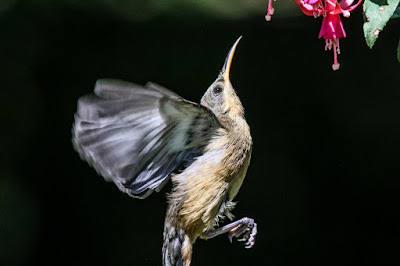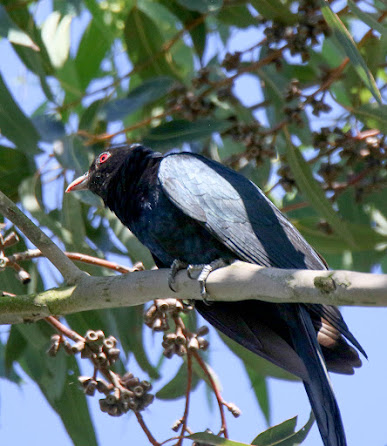My birdbath and its visitors, hot day January
There are always visitors to the birdbath hidden away under the lemon tree at home.
Usually it is one bird at a time, sometimes a pair of birds together.
Early morning seems to be a good time. With the bigger birds, it is not the bathing which attracts them. It is the water. Crows, magpies, currawongs and choughs will bring hard scraps of food to the water and dunk it in to soften. Sometimes they have bread, sometimes a caterpillar, a snail a blackberry. I am not sure where the hard round seeds left in the bottom come from. All this of course leaves lots of gunk in the water, which begins to smell very quickly. Daily clean out is required
Other times, the birds come in for a drink. They are usually very wary and nervous. I suppose they need to be careful. Heads down in the water might be a good time for a cat or a larger bird to swoop in,
On this hot morning, it seemed to be just bath time. Usually alone, but this day there were several birds in pairs of the same family and several birds of different varieties together.. A little bit of argy-bargy at if one bird was taking too much time. Just like the banging on bathroom in our house when we were kids.

One bird, the Eastern Spine-Bill, is the most common visitor to the bath. He or she is often in the garden feeding from the fuchsia bushes. This little immature bird lets one know it is about by the noisy way it uses the bath. First the flap. flap of it's wings as it approaches, followed by a loud plop as it enters the water. Splash, splash, splash, water all over the place and then the quick flapping of its wings as it flies into the lemon tree to preen a little. Then back again, four, five and six times, before it is all finished. So lovely to watch and listen to whilst sitting outside, reading the morning paper.















